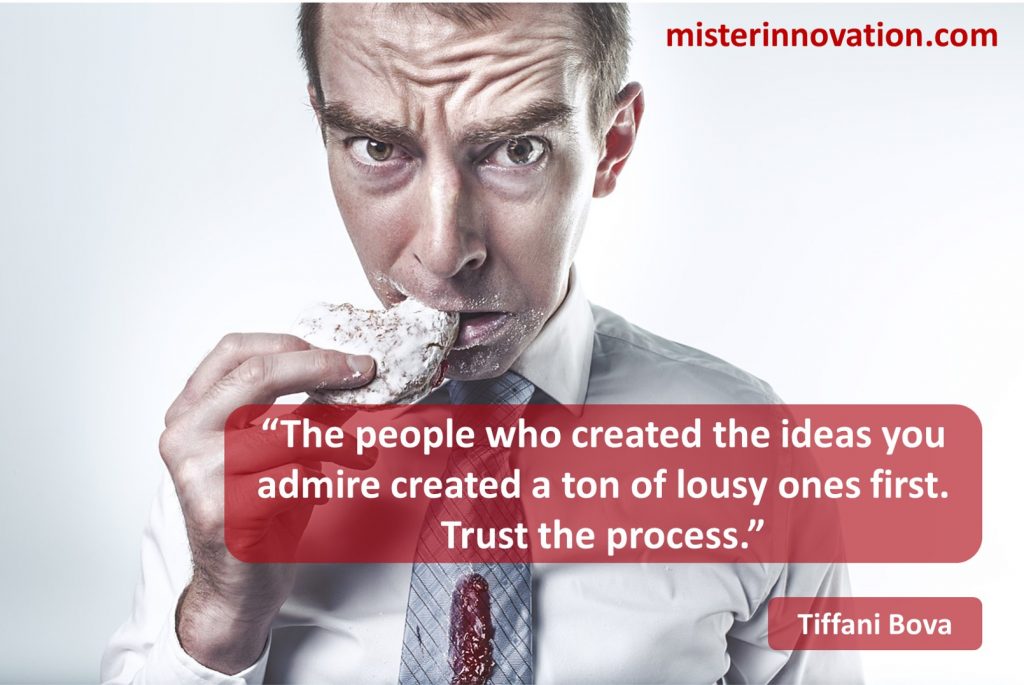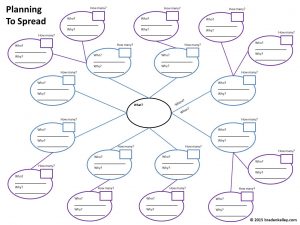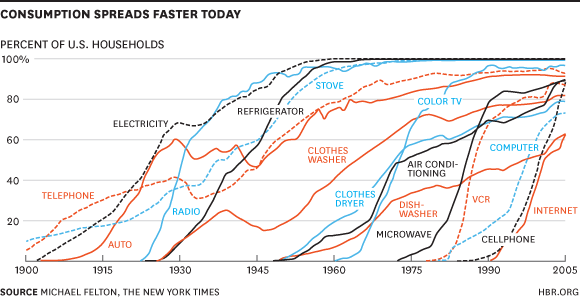
GUEST POST from Howard Tiersky
We all know the world is changing rapidly. It’s clear that in order for organizations to remain relevant to the next generation of customers, and even in the next generation of technology, we must adapt, evolve and transform. The field is littered with once-great companies who failed to do this: Blackberry, Nokia, Kodak, Borders, Western Union, Blockbuster, Polaroid.
But accepting major change, or even in some cases small changes, isn’t easy for large companies. At Innovation Loft we’ve worked with scores of major brands on their efforts to conceive, create and launch new products, enter new markets, redefine their value propositions and distribution strategies, and address various types of transformations. We’ve seen some spectacular successes and some tragic near misses. In watching these innovation stories unfold, we’ve concluded that there are three key reasons why innovations fail.
Three Key Reasons Innovations Fail:
- The Wrong Idea
- Failure to Execute
- Sabotage!
It’s important to keep these three domains of risk in mind when approaching any innovation project, and a lot of our work at Innovation Loft is focused on how to manage and mitigate risks in each of these three categories. Let’s look at these one at a time:
1. The Wrong Idea
Change is not always good. New is not always popular. How can you tell the right ideas from the wrong ones? Here are a few practices that can make a big difference.
Focus on Customer Needs
It may seem like Apple has made its success on delivering customers new capabilities they “didn’t know they needed.” And that may be true in the sense that if you had asked customers, they might not have articulated a desire for an iPod or an iPad. However, if you focused on observing consumers in their day-to-day interactions back then, the challenge of dealing with dozens or more CDs, and the decision about which ones to bring clearly created a “pain point.” Fast forward a few years. People trying to curl up with their laptop in bed to watch a movie was clearly awkward, and watching a movie on a small iPhone was also sub-optimal. Apple identified gaps they could fill. Many unsuccessful ideas lack a clear customer value proposition and are based on the assumptions of a benefit consumers will eventually realize.
Test and Iterate
Think of product development as a spiral. Test the simplest, lowest-cost version of your product (even if it’s a paper mockup) to get early feedback from users. Continue that process each step of the way, through launch and beyond, to really understand how consumers are using your product and where it may need improvement.
Pivot
Ultimately, don’t fall in love with your idea. Focus on the value you can create for your customers. Even with the first two points in this list, you can still find yourself launching the wrong idea. That’s the risk of innovation. In a large corporate environment, it’s important to set the expectation up front that there will be flexibility on redefining the product, even substantially, as the project goes on. While this approach may not be consistent with typical enterprise “capital budgeting” processes, it’s critical to the success of innovative projects.
2. Failure to Execute
Even if you have the right idea, you can fail to execute. Effective execution is measured by quality, speed, and communication.
Quality: Does the product fulfill the vision? An initial version of a product may not be as feature-rich as future releases (the original iPhone did not allow copy and paste, let alone the downloading of apps!) The key test is not comprehensive features but doing a few things very well.
Speed: In a world of innovation, we are always in competition. At the initial launch of Android, it was clearly behind the curve compared to iOS. Over time, Android was able to catch up and eventually exceed iOS sales. The two remain locked in an arms race for higher standards and better capabilities, and the timing of improvements clearly has a substantial impact. Nevertheless, Android’s story demonstrates that even with a late start, one can catch up. Kyocera and Nokia were in the market with smartphones several years before Apple.
Communication: Peter Drucker said, “Business has just two functions: innovation and marketing.” The two must go hand-in-hand. Apple’s genius has been the marriage of a great product with great communication.
3. Sabotage
Companies are designed to resist change. Classic business books define how organizations must specify roles and clear processes for how to operate. But this resistance to change is misplaced when it comes to innovation. We’ve seen many great projects killed in infancy, or even after launch and initial success, due to areas of an organization whose interests would be threatened by the success of that transformation.
If a new product or project is truly going to be transformational for your company, expect it to have enemies. These enemies’ very survival (or their perception of it) may be at stake. Many innovative products that were on the path to “saving the company” are killed through internal sabotage. As soon as there is any misstep in an innovation initiative — as there always is — forces are ready to pounce and convince the powers-that-be that it’s time to “put it out of its misery.” Can you imagine Apple killing the iPhone over Antennaegate or the Apple Maps debacle?
How can you avoid sabotage? One tactic is trying to gain as much organizational alignment as possible during each step of the innovation process. Don’t assume that because a solution seems “obvious” to your team that others will automatically support it. Involving key executives, in addition to as many parts of the organization as possible, will garner more support. Give team members the chance to participate and feel ownership of the initiative. In the words of Harry Truman:
“It’s amazing what you can accomplish if you don’t care who gets the credit.”
So how do you figure out the right answer, get everyone on the same page, and focus on a common innovation goal? At FROM, we use a specific model to approach the process of identifying the most relevant opportunity areas for innovation, and to build group consensus around the best approach. You’ll have to adapt it to your situation, but the model should provide a good starting framework.
This article originally appeared on the Howard Tiersky blog
Image Credits: Unsplash
![]() Sign up here to get Human-Centered Change & Innovation Weekly delivered to your inbox every week.
Sign up here to get Human-Centered Change & Innovation Weekly delivered to your inbox every week.
 Drum roll please…
Drum roll please…
 GUEST POST from Art Inteligencia
GUEST POST from Art Inteligencia If your organization is struggling to sustain its innovation efforts, then I hope you will do the following things.
If your organization is struggling to sustain its innovation efforts, then I hope you will do the following things.
 But, an idea can be built to spread.
But, an idea can be built to spread.






 A few years ago I looked around the corporate and consulting landscapes and I noticed that there was a talent gap in both places. There are many occasions when consulting firms look to their bench and don’t have the talent they need there to fulfill a client need right away and so sometimes they lose business to their competition. And on the corporate side, there are many occasions when a manager or director has more work than they can possibly do themselves and what they really need is not a consultant but a smart, flexible resource that can parachute in and get up to speed helping them very fast. Having been called in to fill both of these kinds of gaps from time to time alerted me to the existence of these two market needs, and so I started to create extendedbench.com.
A few years ago I looked around the corporate and consulting landscapes and I noticed that there was a talent gap in both places. There are many occasions when consulting firms look to their bench and don’t have the talent they need there to fulfill a client need right away and so sometimes they lose business to their competition. And on the corporate side, there are many occasions when a manager or director has more work than they can possibly do themselves and what they really need is not a consultant but a smart, flexible resource that can parachute in and get up to speed helping them very fast. Having been called in to fill both of these kinds of gaps from time to time alerted me to the existence of these two market needs, and so I started to create extendedbench.com.